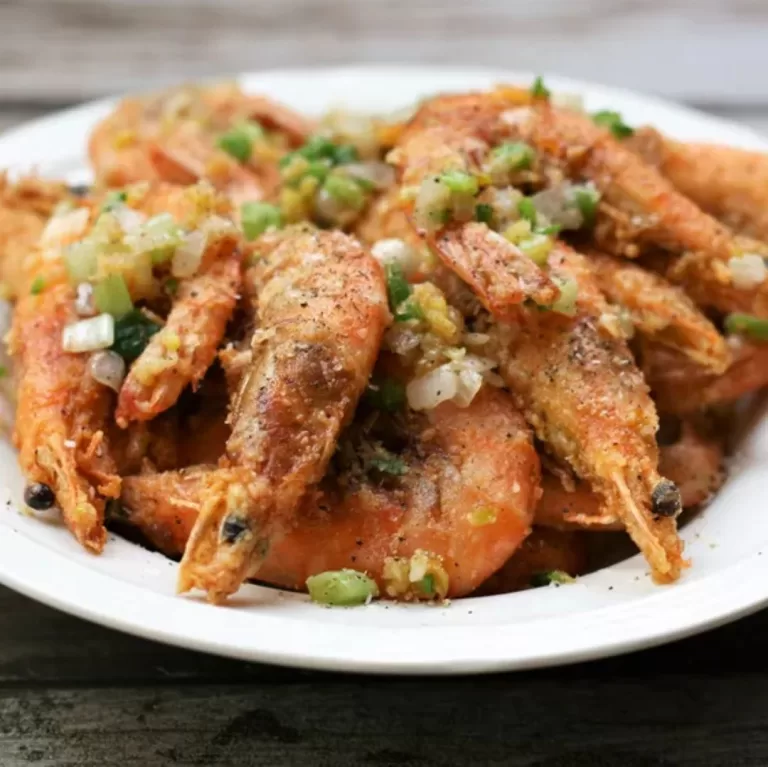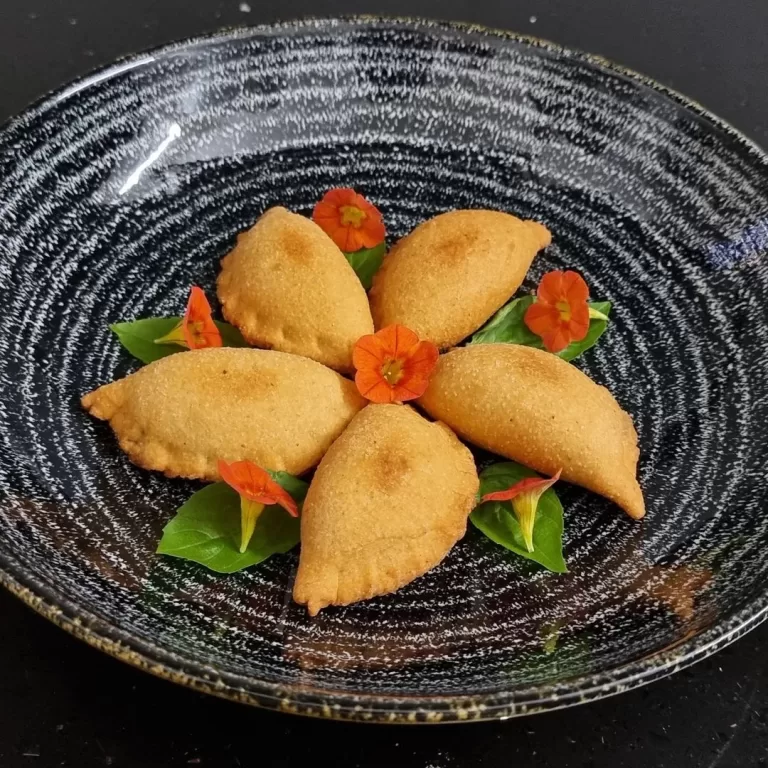Delicious Homemade Chinese Pork Bun Recipe with Perfect Pairings & Nutritional Insights

Craving for some authentic Chinese cuisine? Let’s dive into the world of homemade Chinese pork buns. This recipe will take you on a culinary journey, right in the comfort of your own kitchen.
Known as Baozi, these scrumptious buns are a staple in Chinese households. They’re not just a treat for your taste buds, but also a feast for the eyes with their fluffy and soft exterior.
Stay with us, as we unravel the secrets behind making these delicious buns. You’ll be surprised how simple it can be! With the right ingredients and a bit of patience, you’ll be serving up steaming hot pork buns that taste just like they came straight from a Chinese street vendor.
Understanding Chinese Pork Buns
You may be wondering, what’s so unique about Chinese pork buns, or Baozi? Well, these little packages of deliciousness offer a distinctive balance of flavors and textures. They’re the perfect harmony of soft, fluffy dough encasing a rich, savory pork filling. Not to mention, they’re steeped in years of tradition and cultural significance.
Let’s take a deeper dive into the world of Baozi. There are two integral aspects to consider: the bun and the filling. The bun is made from a yeast dough, yielding an airy, soft texture that perfectly compliments the substantial filling. The filling usually consists of ground pork, finely chopped vegetables for crunch, and a mix of sauces and spices for a flavorful kick.
However, the beauty of Baozi is in its adaptability. You’re not restricted by rigid guidelines. Feel free to add a twist and experiment with filling ingredients, as long as you maintain the balance of flavors and textures.
What about the nutritional aspect? Baozi isn’t just about indulgence—it packs a nutritional punch too. The pork provides a good source of protein while the vegetables offer a dose of vitamins and minerals. Here’s a rough breakdown of an average Baozi’s nutritional content.
| Nutrient | Amount |
|---|---|
| Calories | 200 |
| Protein | 9g |
| Carbohydrates | 32g |
| Fat | 4g |
Ingredients You’ll Need

Let’s delve right into the star components of a perfect Baozi recipe. Of course, experimentation is the key, but here are the traditional ingredients you’ll need to create Baozi at home:
For the dough:
- 500g all-purpose flour: The main component of the soft, fluffy bun.
- 1 packet instant yeast (7g): This will help your bun dough rise.
- 2 tablespoons sugar
- 1 cup lukewarm water
For the pork filling:
- 500g ground pork: This serves as a rich, succulent filling for your Baozi.
- 1 cup finely chopped Napa cabbage
- 2 green onions, finely chopped
- 1 tablespoon soy sauce
- 1 tablespoon oyster sauce
- Salt and black pepper to taste
Some bakers like a little secret weapon to make their Baozi stand out. Here’s where the flavor enhancers come in. You might want to try adding a teaspoon of sesame oil or Chinese five-spice powder to the pork filling. The unique flavors will undoubtedly bring an extra kick, creating a memorable Baozi experience.
On the nutrition front, a homemade Baozi with this specific recipe provides a mix of key nutrients. Refer to the table below for the nutritional breakdown per serving.
| Calories | Protein | Carbohydrates | Fat |
|---|---|---|---|
| 300 | 14g | 34g | 6g |
Remember, the joy of making Baozi at home is the ability to customize it according to your taste and nutritional preferences. The list of ingredients is a guide, not a strict rulebook. So, go on, unleash your culinary creativity while crafting your homemade Chinese pork buns.
Step-by-Step Cooking Instructions

Begin your culinary journey with this simple yet authentic Baozi recipe. Each direction is precise, making it easy for even beginners to succeed.
Step 1. Preparing the Dough
Start by activating the yeast. Mix a teaspoon of sugar in half a cup of warm water and then add the yeast. Let it sit for about 10 minutes until it foams slightly.
Step 2. Mixing Ingredients
Combine 3 cups of all purpose flour with a pinch of salt in a large bowl. Pour in the yeast mixture, kneading until the dough is smooth.
Step 3. Rising Time
Cover the bowl with a damp cloth and let it rest for around 2 hours or until the dough doubles in size.
Step 4. Preparing the Filling
Stir fry the ground pork with shredded cabbage and chopped green onions in a pan until fully cooked. Add a dash of sesame oil and sprinkle Chinese five-spice powder for an added kick that’s sure to impress.
Step 5. Assembling the Baozi
Roll the risen dough into a log and cut it into 12 equal portions. Flatten each piece with your palm and spoon in the pork filling. Gather and pinch the edges to seal.
Step 6. Steaming the Buns
Arrange the buns in a steamer, making sure they’re not touching. Steam for 15 minutes until they’re fluffy and cooked through.
The benefit of making your own Baozi is the flexibility to alter the ingredients to your liking for a truly unique homemade bun. With each bun containing 300 calories, 14g of protein, 34g of carbohydrates, and 6g of fat, it’s a nutritious choice for a snack or meal.
| Nutritional Breakdown | Amount |
|---|---|
| Calories | 300 |
| Protein | 14g |
| Carbohydrates | 34g |
| Fat | 6g |
Tips for the Perfect Pork Bun

For all you kitchen aficionados who want to take Baozi-making to the next level, here are a few vital tips to help make a perfect pork bun.
One of the most critical elements in making excellent Baozi is kneading the dough. It’s not just mixing the yeast and flour – it’s a process. Start by activating the yeast in warm water until it’s frothy. This step ensures that the yeast is alive and can help the dough rise. When adding the flour, incorporate it gradually to avoid lumps, and knead it well until the dough becomes soft and smooth. Remember, you’re looking for a pliable, non-sticky dough that’s easy to work with.
The filling is what gives the Baozi its character. Given its importance, you ought to take extra care when preparing it. Use fresh ingredients when possible for a vibrant taste. The classical filling often comprises pork, cabbage, and green onions, enhanced with sesame oil and Chinese five-spice powder. Still, you could modify it according to your taste. Grated ginger or even a bit of finely chopped kimchi can add a remarkable zing to your filling, making your Baozi stand out.
To make your Baozi visually appealing and ensure they cook evenly, consistency in shaping is important. When assembling the buns, make sure each portion has the same amount of dough and filling. You can use a cookie scoop or a scale to help you with this.
Lastly, don’t overlook the steaming process. A bamboo steamer is a traditional choice, but other steamers or even a makeshift steamer could work just fine. The key is to let the steam cook the buns until they are fluffy and soft.
In terms of nutrition, a homemade Baozi offers:
| Nutrition | Amount per Serving |
|---|---|
| Calories | 300 kcal |
| Protein | 14g |
| Carbohydrates | 34g |
| Fats | 6g |
Not only is a homemade Baozi delicious, but it’s also a balanced meal option for those keeping an eye on their diet.
Serving and Enjoying

Good food is often elevated by the occasion, the company, and yes, even the serving suggestions. Pairing your homemade Chinese pork buns, lovingly crafted from fresh ingredients, with the right sides and drinks, could elevate the experience from just a meal to a delightfully memorable event.
Serving Suggestions
Your freshly steamed homemade Baozi are best enjoyed warm, releasing true juiciness and flavors of the filling with every bite. Complement these fluffy pockets of delight with a side of pickled vegetables. It’s a match made in culinary heaven. The acidity from pickles cuts through the rich filling, balancing the flavors and refreshing your palate after each savory mouthful. To give it a Western fusion, you could also try a side of coleslaw or a simple fresh green salad.
Drink Pairings
As for drinks, pair your pork buns with a traditional Chinese tea, such as Oolong or Jasmine, as they offset the richness of the pork. Another option could be light beers like Pilsner or wheat beer, known to harmonize with pork dishes.
Alternative options, for those willing to experiment, include a rich, buttery Chardonnay for a more classical combination, or a berry-infused craft cider for a cheeky contrast.
Modifying the Recipe
It’s important to remember that recipes are merely guidelines, not set in stone. Feel free to put a personal twist on it if your palate desires. Add chopped chives or shredded cheese to the filling, or create a fusion bun with chutney or cream cheese. The options are limitless.
Allow the indulgence to feel like a celebration, because with homemade food, it always is. And don’t forget, you’re also serving up a wholesome, balanced meal – with a mere 300 calories, 14g of protein, 34g of carbohydrates and 6g of fat – your Baozi is both flavorful and nourishing. Enjoying a homemade Chinese pork bun is not just about eating; it’s an experience that encompasses tradition, flavor, and health.
Conclusion
So, you’ve seen how homemade Chinese pork buns can transform your dining experience. Pairing them with the right sides and beverages truly elevates the meal. Whether you’re a traditionalist who enjoys them with pickled veggies and Chinese tea, or a fusion food fan pairing them with coleslaw and craft cider, the choice is yours. Don’t forget, you can always tweak the recipe to your liking. Add chives or cheese to the filling or create your own fusion bun. Remember, making and enjoying homemade food is a celebration in itself. Plus, with each pork bun packing a balanced meal of 300 calories, 14g protein, 34g carbs, and 6g fat, it’s a delicious way to keep your nutrition in check. So go ahead, roll up your sleeves and make your kitchen the hottest Baozi spot in town!





